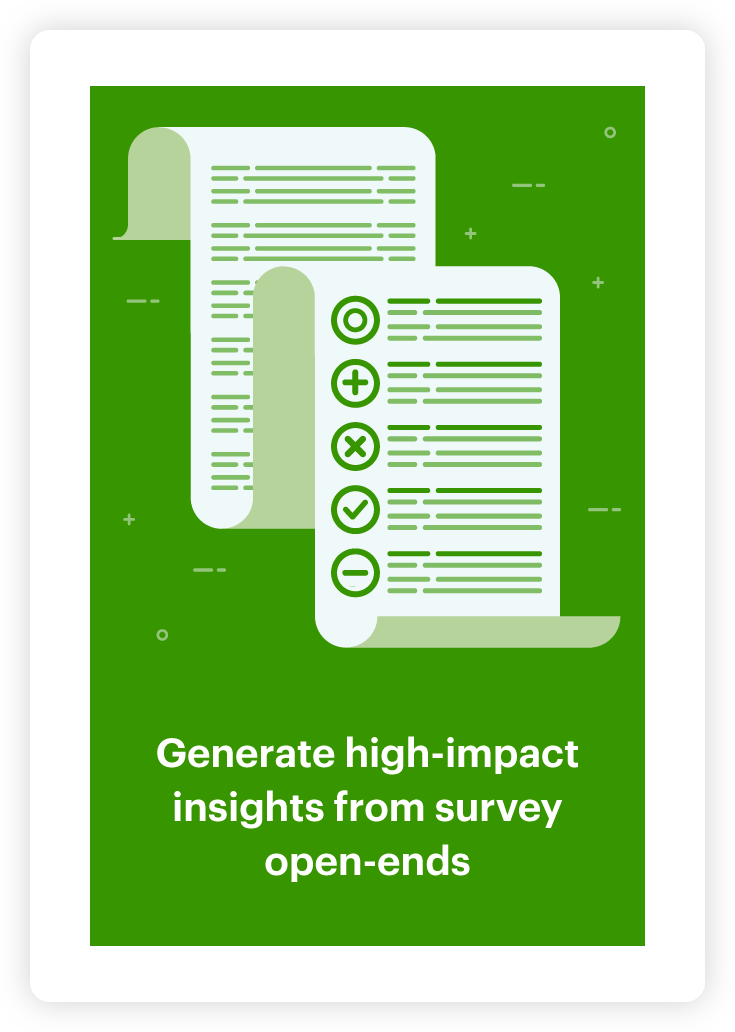Analyzing which luxury products different consumers choose

Luxury products have been remarkably recession-proof. Despite initial indications that the cost-of-living crisis would impact consumer behavior towards luxury goods, firms themselves report that the market is as strong as ever, with gen Z powering this performance.
Given this surprising generational shift, it’s more vital than ever for luxury brands to understand what drives consumers. Our report into gen Z and millennial views explored this briefly, however, the survey which informed this research had more to divulge. To further understand what different groups thinks about luxury goods, we reanalyzed responses to one open-ended survey question: “If you had $1,000 to spend on any one item, what would it be?”
Relative Insight’s survey analysis tool unlocks the insights unearthed by open-ended survey questions. Rather than manually reading, coding and categorizing responses, the platform uses its comparative methodology to do this within minutes. The software enables you to use data points from responses to closed or multiple choice questions to build comparisons – meaning you can pinpoint the key areas you wish to analyze.
In this example, as well as our gen Z vs millennial comparison, we used to the tool to segment by gender and geography. This allowed us to determine whether these aspects also had an impact on consumers’ view of luxury products.
Practicality and versitility versus top luxury brands
In the report, our comparison of gen Z and millennials found clear differences in how they’d spend their $1,000. Millennials were far more likely to spend it on big-ticket items, while gen Z preferred to save or use it on family. However, given gen Z are fueling a luxury boom, we re-examined their responses to see whether we could draw further insights from what they said.
The theme of practicality continued to shine through, with gen Z respondents infinitely more likely to respond with words relating to ‘use’. It was also clear that, despite the question suggesting they spend the $1,000 on one item, they would rather spread the money around. Gen Zs were infinitely more likely to use the word ‘then’, listing their various spending desires in order of priority.
“I’d spend it on shirts from my favorite brand, a pack of shoes, then use a big majority on plants and for Christmas presents for my family.“
What really stood out when analyzing millennials’ responses was their focus on brand names. They were 4.3x more likely to use ‘names’ and 4.6x more likely to use ‘singular proper nouns’. This consisted of brand and luxury product names like ‘Prada’, ‘iPad’ and ‘Selfridges’. It’s clear that these brand names resonate much more with millennials than gen Z.
“Prada black re-nylon jacket.“
“IPad and accessories for it.“
What constitutes luxury items for women and men
Our second segmentation point examined gender. In the survey, very few respondents identified as genders other than male or female, meaning men versus women was the most insight-laden comparison.
In terms of luxury items men like to buy, our survey analysis highlighted two typical types of luxury products – and a surprising one. Men were 7.2x more likely to talk about watches and 4.8x more likely to mention laptops, items typically classified as high-end goods. However, they were also 12.0x more likely to talk about music and musical instruments, such as ‘guitars’, ‘pianos’, ‘bass’ and even ‘harps’.
“A piano, I’ve always wanted to learn.“
When it came to the top luxury items for women, fashion and holidays ranked highly. Women were 4.3x more likely to talk about fashion and infinitely more likely to use the words ‘designer’ and ‘handbag’. They also used the word ‘holiday’ 5.8x more than men, indicating that they consider vacations as a luxury item.
“Easy, a designer collectable bag!“
How geography impacts luxury product preferences
People from across the globe answered our survey – with the majority of respondents from the UK, US and Hong Kong. By splitting and comparing responses from people in each nation, we could see the impact geography had on luxury product choices.
In the US, luxury athleisure was the item which overindexed. Americans talked about ‘fitness’ and ‘workout clothing’ infinitely more, also citing that they wanted to feel ‘premium’ while exercising.
“I’d definitely buy quality workout clothing.“
For Brits, luxury means ‘designer’ goods. They were infinitely more likely to use the word, with it accounting for a range of products related to fashion and accessories.
“I would spend the money on a vintage designer handbag.“
Respondents from Hong Kong took a completely different approach. Rather than buying a luxury item, they would look to invest the money. They used words relating to ‘investment’ 14.9x more, including ‘stocks’ and ‘market’.
“I would use it to invest in tech stocks and other etfs.“
Despite respondents in all three countries answering the same question, our survey analysis demonstrates just how different their views of what constitutes ‘luxury’ are.
Surfacing insights from survey data
These are just some of the insights we extracted by analyzing multiple data points encompassing one open-ended survey question. By using answers to closed survey questions to segment open-ended responses, you can understand a variety of perspectives – all of which help to inform your next steps.
In this example, luxury brands’ next steps would vary according depending on the consumer group they wanted to reach. For example, if they were looking to target gen Z respondents, or those living in Hong Kong, emphasizing a luxury item as an investment is vital to achieve resonance with these audiences. Conversely, highlighting the premium feel of products chimes with American views, while referencing designer labels and brand names works best to attract Brits and millennials.
Relative Insight’s survey analysis software removes the traditionally laborious manual processes required to mine survey responses for insights. The platform allows you to generate actionable insights within minutes. To find out how you can get more value out of your survey data, speak to one of our team now.
